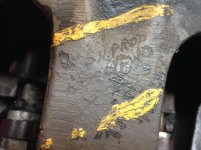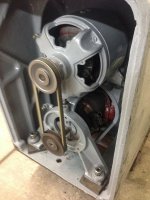perky
Plastic
- Joined
- Oct 21, 2013
- Location
- lockport ny
ok I finally got around to rewraping my field coils with # 27 3m tape and glyptol . Motor worked fine when i took it out. Insulation was half gone on field coils. On the bench i was reading 73 ohms at f1 and f2 and infinite on other poles. Put the motor in and i have bad brush sparking and motor only runs in reverse at slow speed. Now my readings are 54.6 ohms on f1 and f2 . A1 to f1 is 1.7 ohms and 1.6 at a1 to f2 . I am not very good at electric and would appreciate any help. thanks









